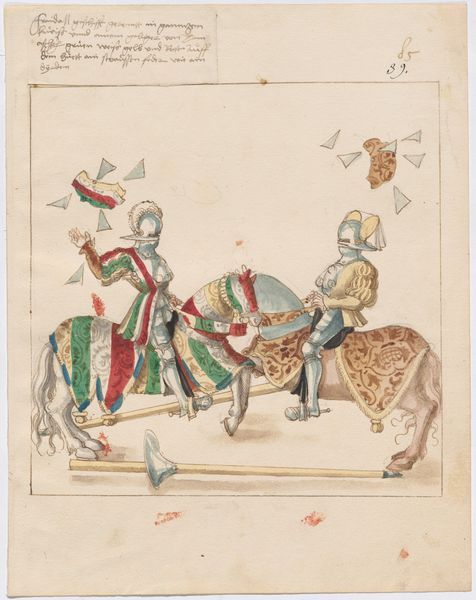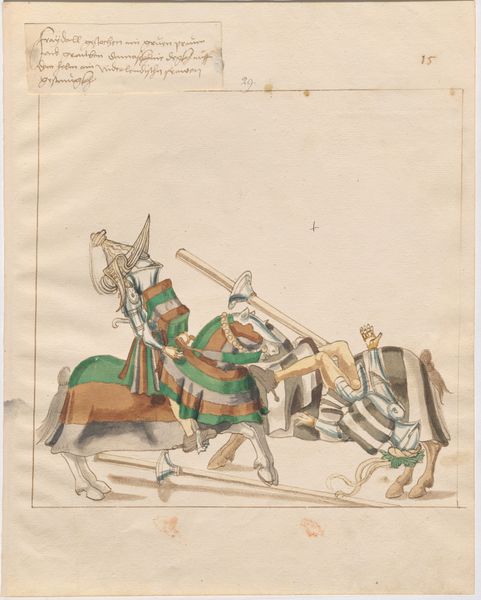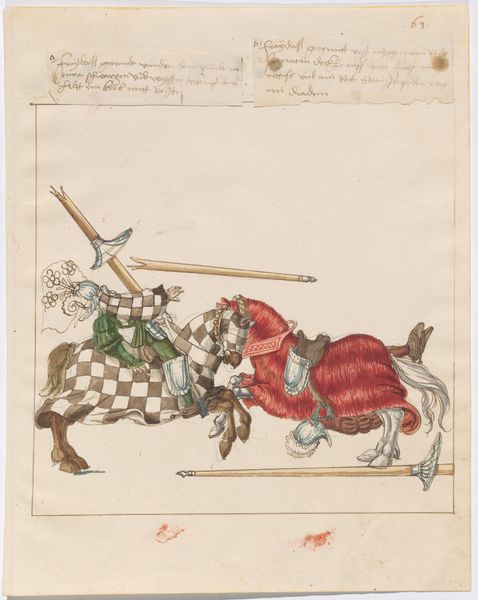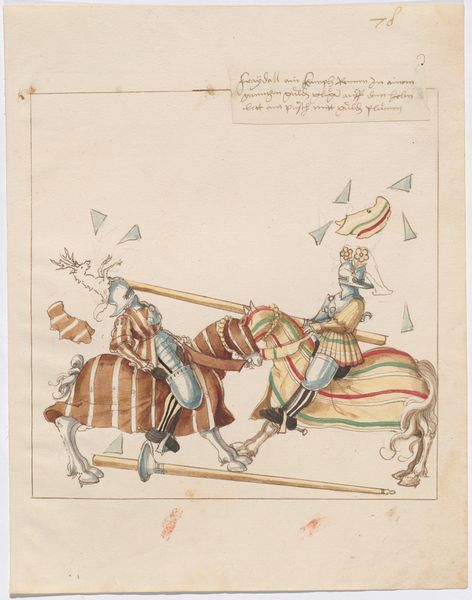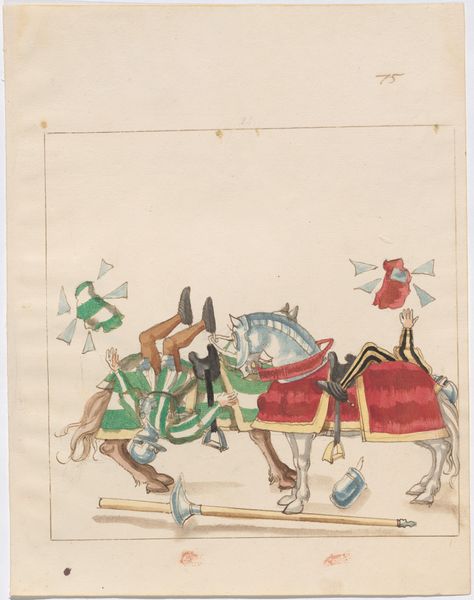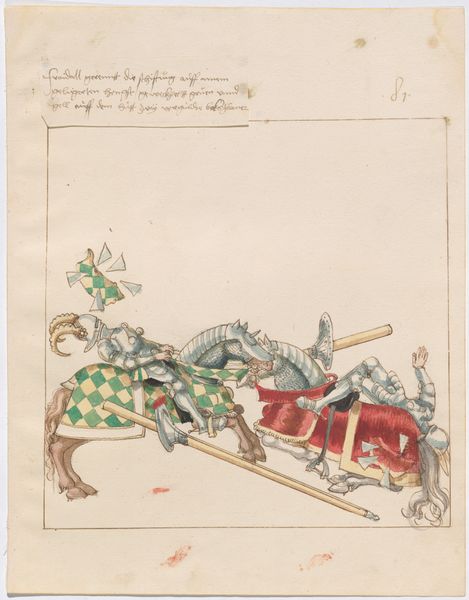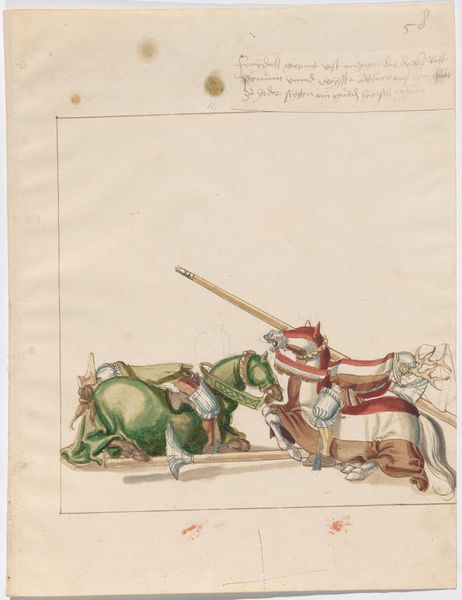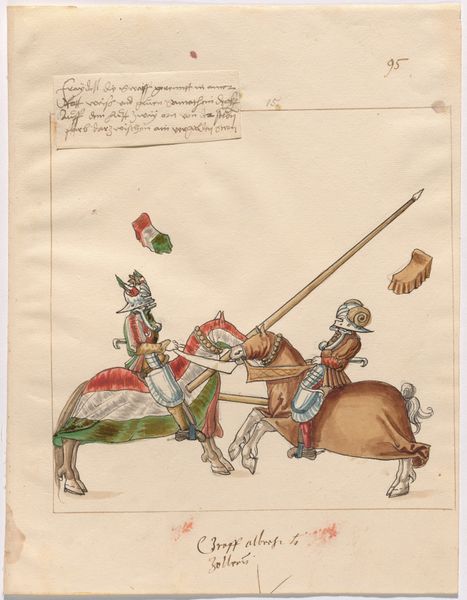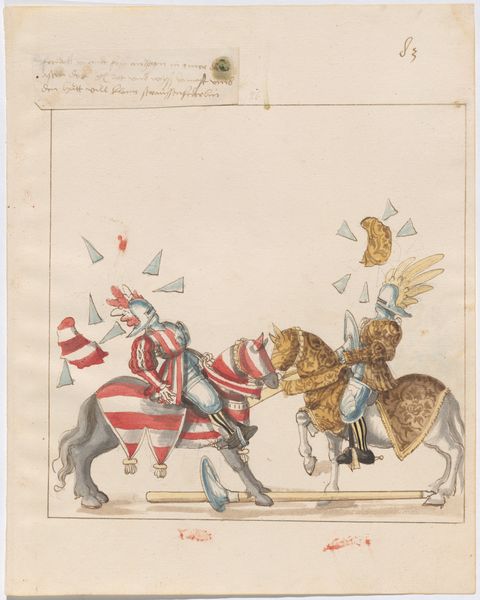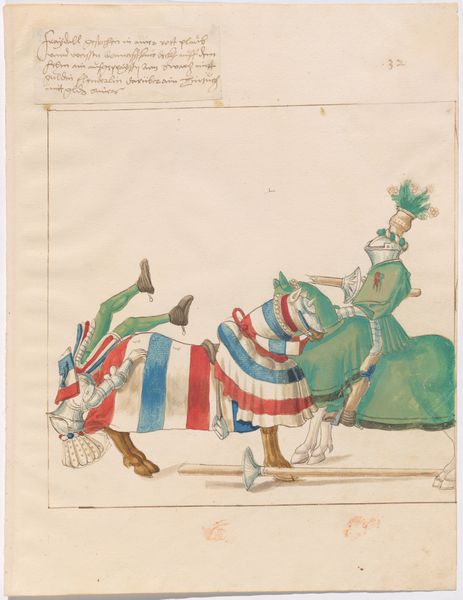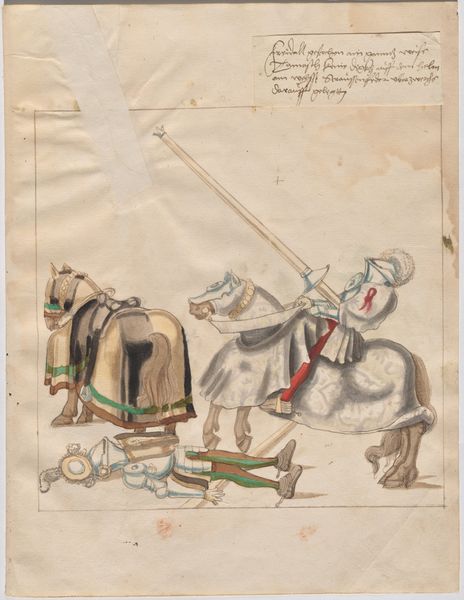
Mock Joust of War with Flying and Exploding Shields c. 1512 - 1515
0:00
0:00
drawing, coloured-pencil
#
drawing
#
coloured-pencil
#
medieval
#
narrative-art
#
figuration
#
coloured pencil
#
history-painting
Dimensions: sheet: 34.3 × 26.3 cm (13 1/2 × 10 3/8 in.)
Copyright: National Gallery of Art: CC0 1.0
Editor: Here we have "Mock Joust of War with Flying and Exploding Shields," a drawing made around 1512-1515 with colored pencils by an anonymous artist. The joust itself appears almost playful, but what strikes me is the rather awkward positioning of the fallen knight. What can you tell me about the message embedded within this piece? Curator: That awkwardness is precisely the point. Consider the context: early 16th century, a period of intense social and political upheaval. Jousting, once a symbol of knightly virtue and power, is being satirized here. The flying and exploding shields aren't just decorative; they represent the chaos and fragility of established power structures during this time. Editor: So, it's more than just a humorous scene? Curator: Absolutely. Think about who had access to creating and viewing art like this. Likely members of the elite class, potentially critiquing themselves, or at least acknowledging the shifting sands of power. It invites us to question whose stories are being told, and from what perspective. Is this simply entertainment, or is it a form of social commentary subtly undermining the traditional roles and expectations of the aristocracy? How do you think class and status play into the scene depicted? Editor: That makes me reconsider the entire drawing. The almost cartoonish depiction of the violence, contrasted with the elaborate details of the armor, creates a sense of irony. Curator: Precisely. This irony becomes a tool to deconstruct the glorification of warfare and challenge the traditional notions of chivalry. This subversion, in its own way, is a form of activism – questioning the established order through visual representation. Editor: I hadn’t considered the work as a critique of power itself, very insightful. I see how placing the work in a social context really changes its message. Curator: Agreed. By examining these historical roots, we can better understand art’s role in challenging and reshaping societal norms.
Comments
No comments
Be the first to comment and join the conversation on the ultimate creative platform.


